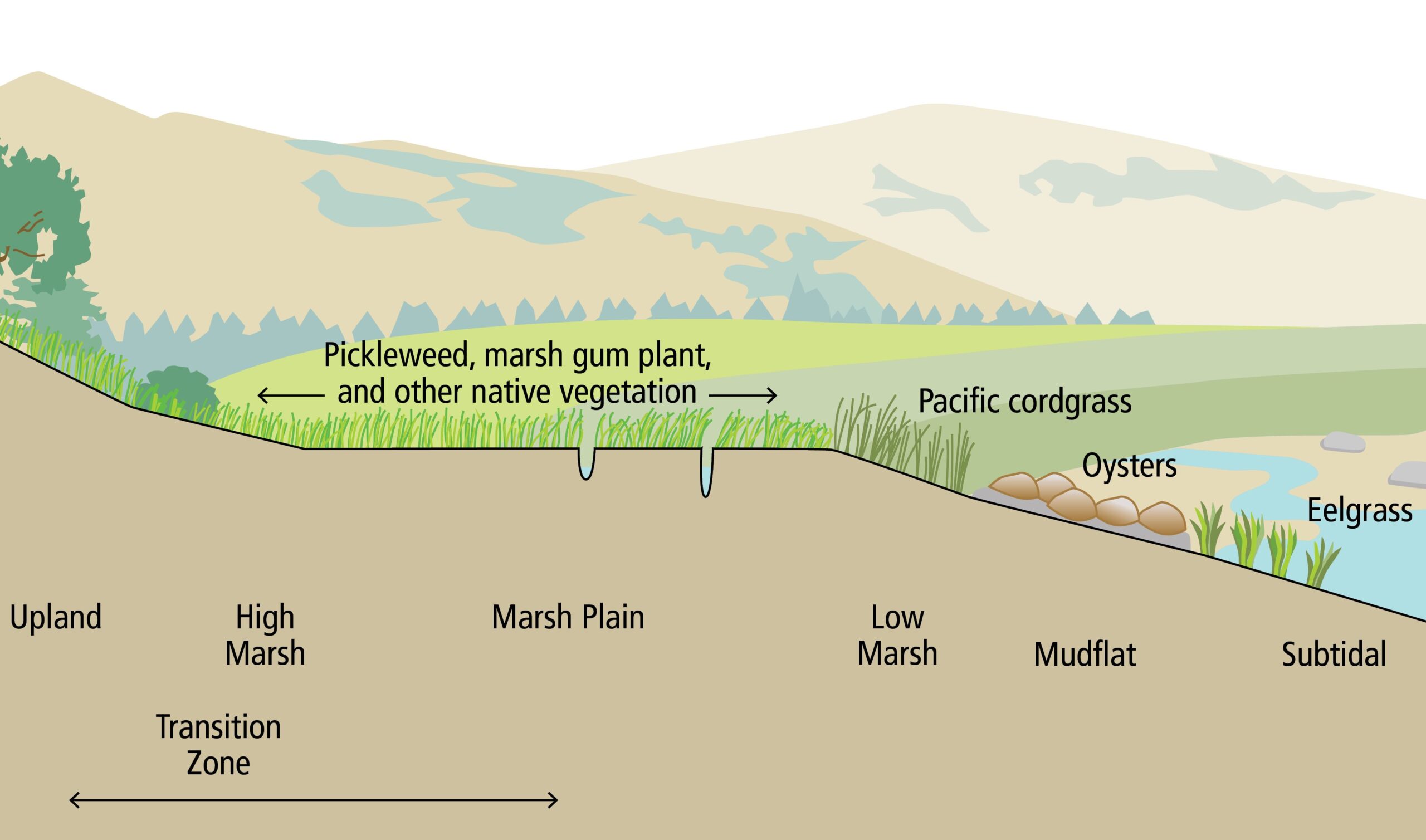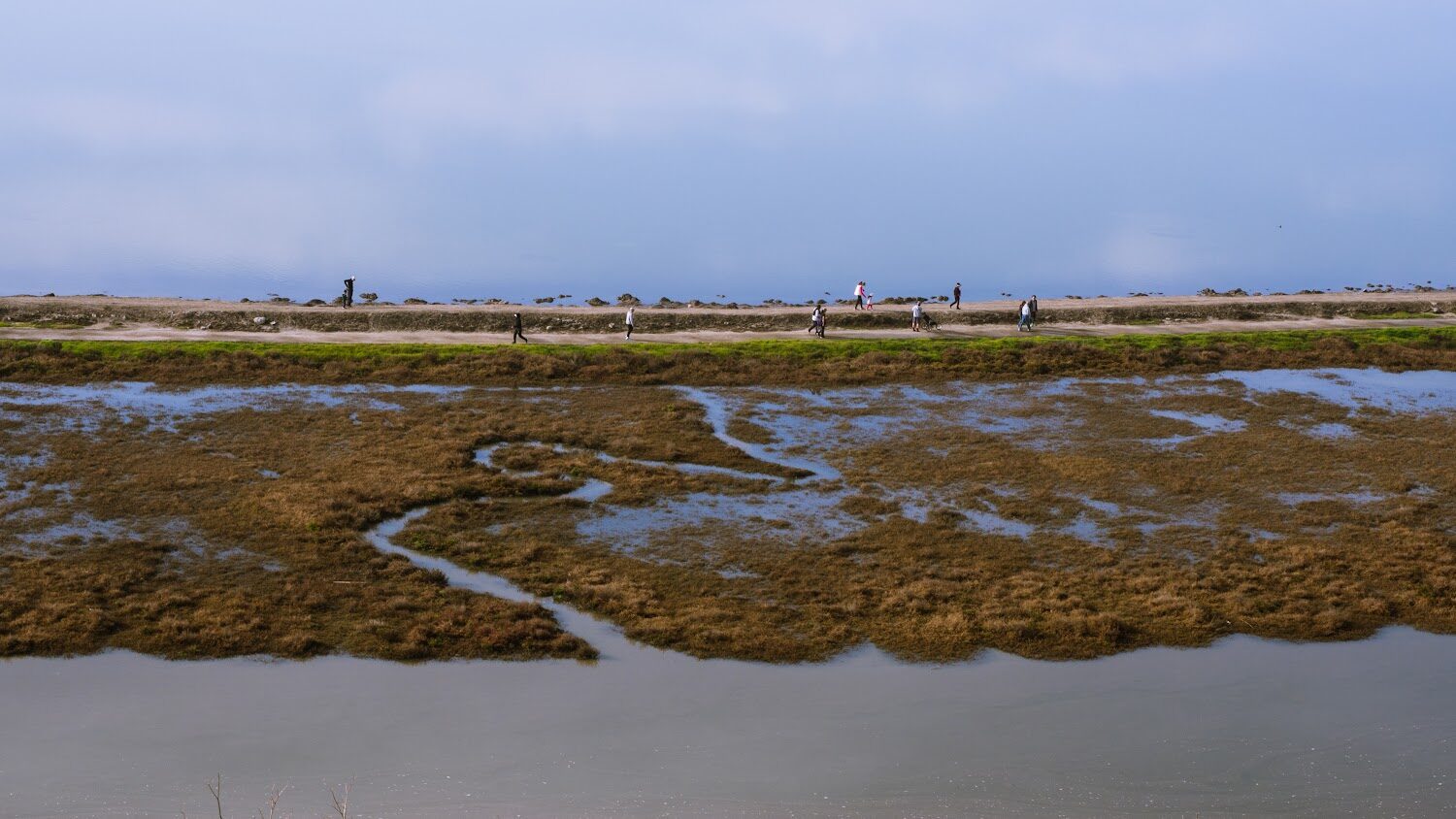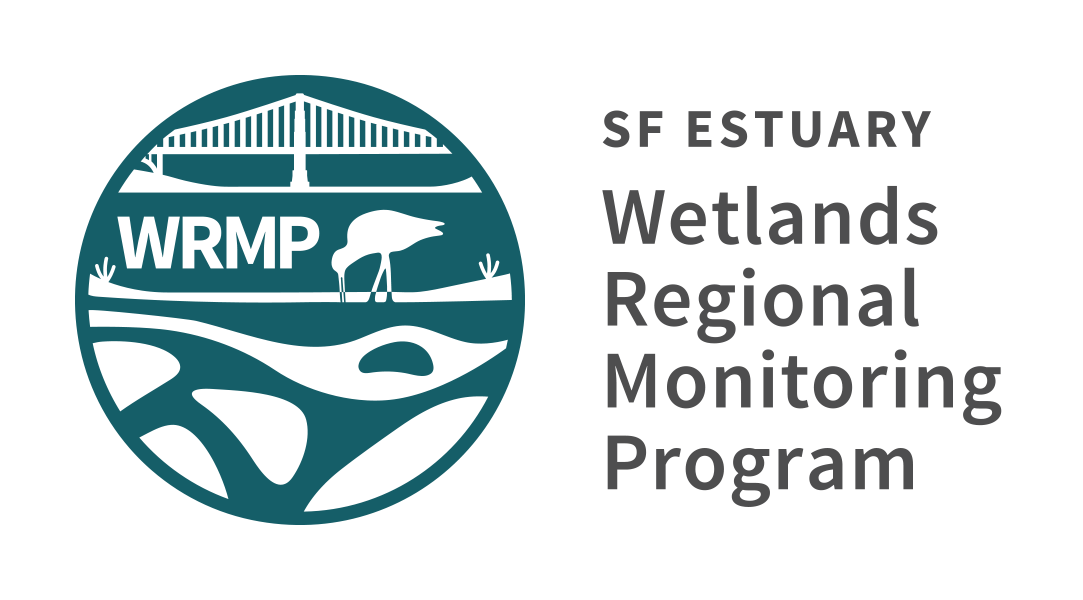WRMP
Tidal Wetland Ecosystems

Tidal wetlands are coastal ecosystems that are saturated daily by tidal water and are found between open water and upland areas. They are characterized by plants that can tolerate growing in saturated soils and can often tolerate growing under saline conditions. Their dynamic nature supports a wide range of wildlife, many of whom depend on unique tidal wetland conditions to reproduce, especially birds and fish. Estuaries, like the San Francisco Estuary, are areas where freshwater from streams and rivers mix with the tidally influenced waters of the ocean, resulting in variable wetland conditions.
Wetlands in the United States have been largely degraded over the last hundred years: a 1990 US Fish and Wildlife Service study estimated that between 1780 and 1980, more than half of wetlands in the contiguous United States had been destroyed, including 91% of wetlands in California. In the Bay Area alone, people converted over 80% of historical wetlands to other land uses, such as agriculture, development, salt production, or ponds for hunting. The San Francisco Estuary’s remaining tidal wetlands are now home to many invasive species, which compete with the 50 local species of endangered plants and animals that call these wetlands home.
Benefits of Tidal Wetlands
Tidal wetlands are vital for ecological health, environmental protection, and community resilience. They:
-
- Provide crucial habitat for fish and wildlife.
- Act as a natural buffer against coastal flooding and shoreline erosion by reducing wave energy.
- Act as a natural sponge, absorbing excess water, reducing water flows, and reducing the risk of flooding in adjacent urban areas.
- Help filter runoff, trapping sediment, pollutants, and excess nutrients, which improves overall water quality and maintains healthy ecosystems and fisheries.
- Effectively capture carbon from the atmosphere and store it in their soils for centuries to thousands of years.
- Provide opportunities for recreation, education, and tourism, enhancing the local economy, supporting public health, and promoting appreciation for natural ecosystems.

Additional Resources
Overview Resources
Select Academic Articles
